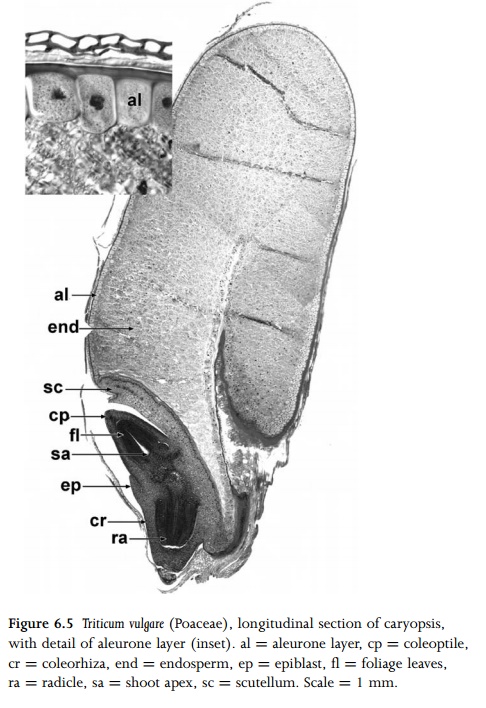Chapter: Anatomy of Flowering Plants: An Introduction to Structure and Development : Seed and fruit
Grass Caryopsis in Seed
Grass Caryopsis
The grass ‘‘seed’’ is actually an indehiscent one-seeded fruit in which
the testa and pericarp are fused together to form a caryopsis (Fig. 6.5). The
grass caryopsis is an indehiscent fruit (an achene) in which the seed coat has
undergone further reduction.

After fertilization the pericarp consists of a few cell layers, and the
integuments disintegrate completely, leaving only a hyaline membrane covered
with a cuticle, derived from the outer layer of the inner integument. Grass
seeds also possess highly diffe-rentiated embryos with a unique highly
characteristic prominent outgrowth of the embryo, termed the scutellum, which
is normally considered to be a modified cotyledon. Some grasses possess an
outgrowth opposite the scutellum, termed the epiblast, which has been variously
interpreted as a second cotyledon or an outgrowth of the first cotyledon or of
the coleorhiza. Grass embryos are well-differentiated within the seed, prior to
germination. They characteristically possess a sheath (coleoptile) surrounding
the epicotyl and plumule, and a well-developed radicle also surrounded by a
sheath (the coleorhiza). In some grasses (and a few other angiosperms) the
outermost layer of the endosperm, termed the aleurone layer, is a specialized
tissue of enlarged cells containing protein bodies and large nuclei.
Related Topics